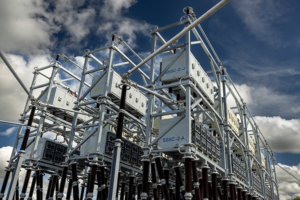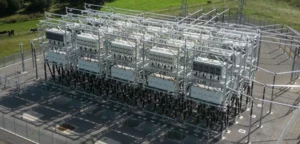
Power flow control featured in Senator Markey’s newly introduced comprehensive grid legislation
March 18, 2022
The CHARGE Act supports the efficient delivery of electric infrastructure to accelerate the energy transition, lower costs for consumers and improve grid reliability and resilience across the U.S.
Senator Edward Markey (D-MA) introduced the Connecting Hard-to-reach Areas with Renewably Generated Energy (CHARGE) Act yesterday.
This bill seeks to accelerate a clean energy transition by supporting planning, transparency, competition and effective oversight of transmission networks. The CHARGE Act establishes reforms through FERC (Federal Energy Regulatory Commission) regulations or amendments to the Federal Power Act to ensure the United States can proactively plan and build a 21st century electric grid.
The CHARGE Act calls on FERC to establish a transmission planning and cost-allocation process that ensures transmission providers include “the use of grid-enhancing transmission technologies and non-transmission alternatives that increase delivery of power over transmission networks, including at a minimum (1) dynamic line rating; (2) topology optimization; (3) power flow control; (4) advanced conductors and; (5) storage-as-transmission.”
The CHARGE Act undertakes across-the-board reforms to establish forward-looking transmission planning to lower prices and improve reliability, improve data transparency to reduce emissions, increase competition to spur innovation and lower prices and strengthen oversight to ensure equity and efficiency.
“It’s incredibly exciting to see the grid finally get much-needed time in the spotlight,” said Jessica Joyce, Smart Wires Senior Vice President, Americas. “The CHARGE Act makes sure we’re not only able to build new infrastructure, but that we’re getting the most out of today’s grid as well.”
This legislation builds on momentum from President Biden’s Infrastructure Investment and Jobs Act which authorized $3 billion in funding for Smart Grid Investment Grants, specifically including power flow control projects as eligible to receive funding.
Last year, Representative Kathy Castor also introduced the Efficient Grid Interconnection Act which would ensure grid-enhancing technologies like power flow control were included in interconnection studies, since these solutions can reduce the cost and time needed to connect new renewable generation to the grid.
Smart Wires’ power flow control technology – SmartValveTM – advances the delivery of affordable, clean energy. SmartValve works by intelligently controlling the flows of power across the network, in real-time. It pushes power off overloaded lines and pulls power on to underutilized lines; balancing power flows evenly across multiple lines.
For press related purposes, please contact us at marketing@smartwires.com.
Dive deeper into related content
Explore our products and services
Talk to our experts


